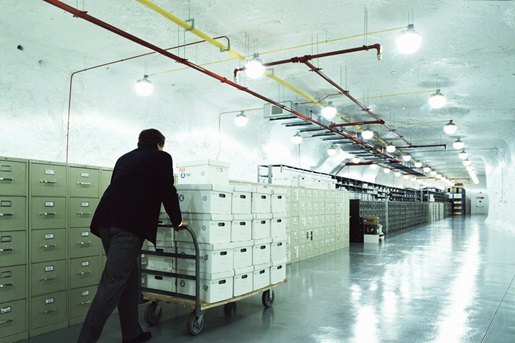How to keep important documents safe and some best practices around document storage.
Important document storage is a common concern for companies of all sizes. Storage used to be simple: Get a set of folders and a locking filing cabinet. However, that solution is simply not adequate in a digital-first world. The sheer volume of data most companies handle makes digitizing documents the only viable option, and both small start-ups and multinational enterprises need to know how to store important documents electronically.
Let’s talk about some best practices for important documents storage you can implement on your team.
Read our free ultimate guide to learn how you can effectively implement the best document storage system for your business.
Why every business should know how to store important documents
Correct storage of important documents is a straightforward way to remove some of the risks from doing business. Besides complying with consumer privacy laws, learning how to store important documents can keep your business and client data from falling into the wrong hands. You will save your team time and money in the possible costly legal action that can follow a security breach. You will also save yourself the headache that comes with misplacing documents and make life easier for your team and clients. A well-organized document management system (DMS) is the best way to store important documents.
How to store important documents with a document management system
A document management system is a software solution that can help you manage important document storage digitally. But a great DMS will do much more than keep documents organized on your computer or in the cloud. It can help keep files secure, set user permissions for confidential documents, track versions, locate files, and run automatic backups.
You’ll also need to decide where to store important documents: on your own servers (on-premise) or in the cloud. DMS solutions come in both flavors, and some providers offer both options.
Their overall functionalities are similar, but a cloud-based DMS will provide greater flexibility because you will be able to access your files from anywhere with a secure internet connection. Meanwhile, an on-premise solution lives on your servers only and typically requires purchasing a license agreement. Some companies prefer on-premise software because it can function without an internet connection and can sometimes give users greater control over its features.
Whichever method you prefer, here are some best practices to follow for important documents storage when using a DMS.
Important document storage strategies to implement on your team
Document classification
Not all documents are created equal. Invoices, legal briefs, W2s, medical records, and any other documents containing personal information can require greater security. That’s where document classification comes in. Creating a classification system for all your company documents will allow you to implement policies for handling different files.
That could include setting rules for access (limiting visibility of certain documents to select employees) or creating a document lifecycle that varies by document type. Classifying documents correctly can also save your team time — many document management systems allow you to use tags and metadata to search for documents, which makes correctly classified documents easier to find.
Designated roles for document management
Decide which team members are responsible for scanning, classifying and storing documents, as well as who is responsible for tracking documents once they’re in your document management system. If everyone is responsible for managing their own files, you should still designate admins who will handle sensitive documents, oversee the DMS, and make sure other team members are following proper protocols. Having a team of individuals responsible for document management sets the right expectations for your employees and eliminates confusion about responsibilities.
Did You Know?:PCMagazine gave the ScanSnap iX1600 an “outstanding” 4.5 out of 5 stars rating, describing it as a “scanner anyone can use with ease.” Click here to read the full review.
User permissions
Ensuring user permissions are set up correctly is vital to protecting your data. Most DMS platforms support some kind of customization tool that allows you to decide who in your organization or on your client roster gets to see which type of document. Also, don’t forget to update user permissions for any employees leaving the company.
Some documents, like those containing Social Security numbers, should only be available to qualified team members (such as your HR representatives). Make sure that you know and can control who has access to confidential documents at your organization.
Document disposal procedures
Responsible information management is not just about storing important documents; you need to have a plan for safely deleting data, too. This is especially true if a consumer requests you do so under a privacy law, like the California Consumer Privacy Act (CCPA). You may also want to delete data about past job applicants or client profiles or to simply clear out old documentation you no longer need.
Having a set of procedures and timelines about sunsetting old or irrelevant documents can help keep your DMS clutter-free and ensure you’re not holding on to information you shouldn’t be.
Version control
Do you have documents named “Final_version_10_really_final” in your files? Do you work in a setting with a lot of stakeholders who are constantly making last-minute changes? Then you can probably benefit from some form of version control in your DMS. Keeping earlier versions of a document stowed a few clicks away can be helpful for tracking changes and reverting to a previous version if a mistake is made.
Backup and recovery plan
If you’re using an on-premise DMS, you’ll need to set up automatic backups and recovery processes in case important documents are lost. This is less of a concern with a cloud-based DMS since your documents are not living on a single server, but making sure you have a plan in place and a way to recover your data is a must.
Did You Know?:The fi-8270 scanner comes with a letter-size flatbed to support both fragile documents and booklets up to 7 mm in thickness.
Our recommendation: fi and SP Series scanners
Those in the market for a reliable document scanner to facilitate important document storage have no shortage of options. We take great pride in having spent the last 50+ years researching, designing, and developing some of the most advanced and powerful electronics in the world, including our professional grade fi and SP Series scanners.
Built to purpose for the most demanding document handling jobs, the fi and SP Series scanners are capable of processing tens-of-thousands of pages per day at the highest levels of accuracy. Their intuitive integration capabilities with all existing work suites minimize time-to-value for businesses looking to invest in tools that will pay dividends for years to come.
For teams in need of a high-performance solution that scans straight to the cloud, the fi-7300NX provides both Wi-Fi and Ethernet connectivity, with or without a PC. Meanwhile, the fi-8190 offers fast, double-sided scanning of up to 90 pages per minute, perfect for offices with high-volume scanning needs. Click here to learn more or shop the rest of our production scanner line.










